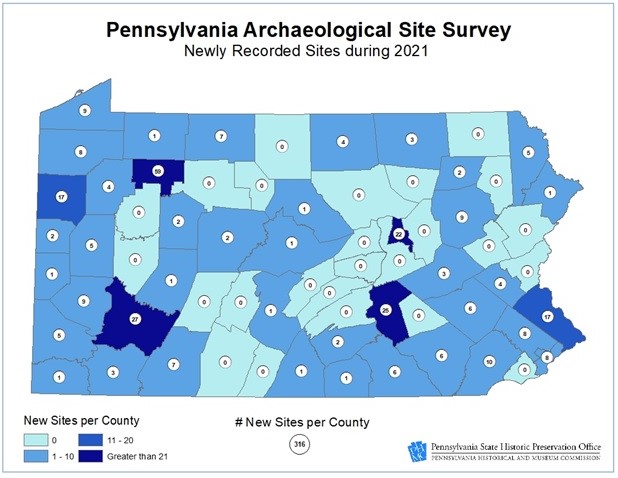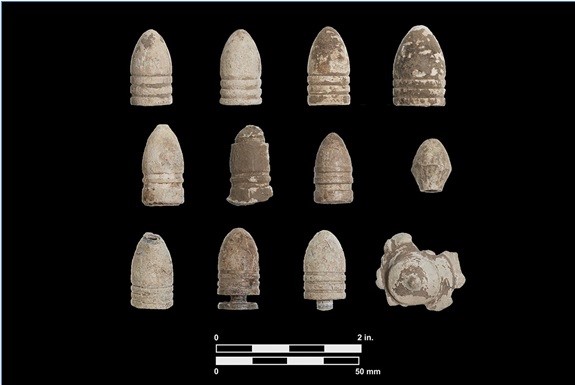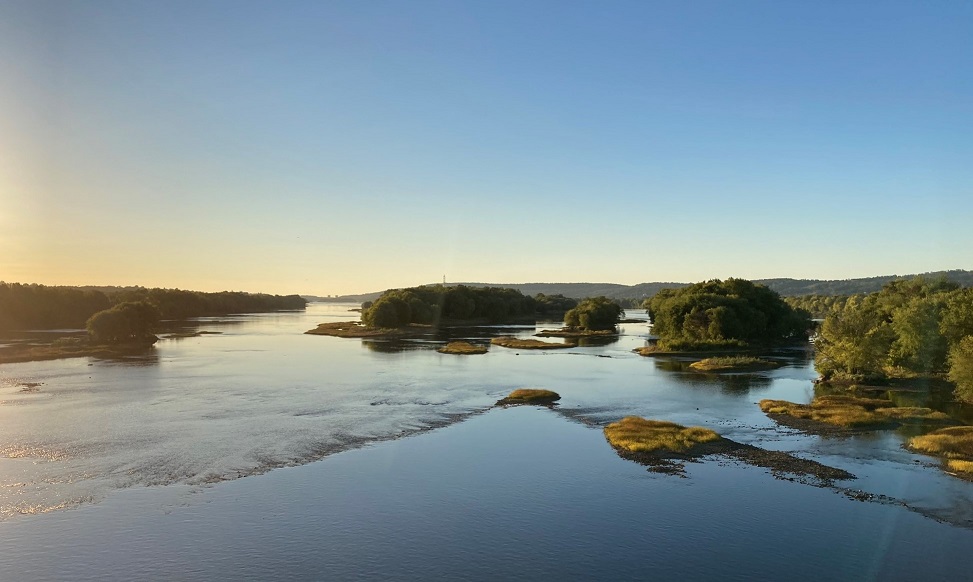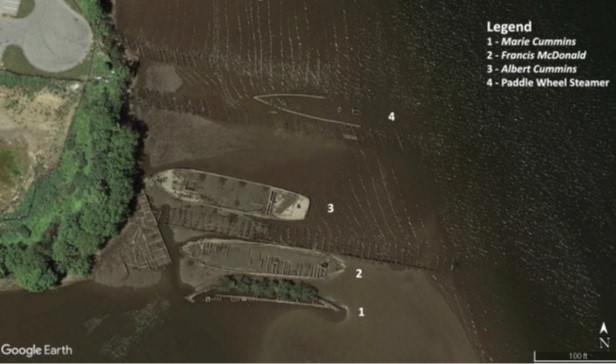It’s that time of the year again! Time to report and reflect on another successful year of archaeological site recording efforts throughout Pennsylvania. In 2021, over 300 new archaeological sites were recorded by cultural resource management (CRM) projects, independent and university research projects, Society of Pennsylvania Archaeology (SPA) members, and long-time avocational archaeologist.
What’s New?
The archaeological site recording process experienced some major changes in 2021 as a result of the launch of PA-SHARE. The most substantial change is that all archaeological sites are now registered and updated directly online through PA-SHARE, no more paper forms (save the trees!).
For those of you who have recorded sites in the past, fear not, though the new recording process follows a different format than the previous PASS form, the types of information recorded are the same. Overall, the switch to a completely online process allows site information to remain as accurate as possible and for new sites and site updates to be available to view immediately after processing.
A more detailed look at changes to the site recording process is presented in the 2021 PASS Report.
The Breakdown
Now it’s time for some quick math. In 2021, 316 new archaeological sites were recorded bringing the statewide total to 26,338 recorded sites. Sites were recorded through a variety of sources, summarized by the table below:
| Source | Sites Recorded | % |
| CRM | 250 | 79.11% |
| PHMC Research | 48 | 15.19% |
| University Research | 6 | 1.90% |
| SPA | 5 | 1.58% |
| Individuals | 7 | 2.22% |
CRM projects accounted for nearly 80% of all new sites recorded last year. The second highest source of new site recordation came from research projects undertaken by staff at the Pennsylvania Historical and Museum Commission (PHMC). Sites recorded by SPA members, university research, and avocational archaeologists accounted for almost 6% of all newly recorded sites.
Of the 67 counties in Pennsylvania, 42 had at least one newly recorded site. The top ten counties with the most sites recorded last year are as follows: Forest, Westmoreland, Dauphin, Montour, Mercer, Bucks, Chester, Erie, Luzerne, and Allegheny.

The highest number of sites were recorded in Forest County with a whopping 59 sites recorded in 2021! For more information on how many sites were recorded in each county last year, see the PASS report on the PHMC’s website.
The 2021 Highlight Reel
In addition to site counts and percentages, the 2021 report includes highlights from various projects that contributed to the PASS files in 2021.
This year, four guest authors provided articles detailing efforts to record and improve stewardship of archaeological sites in the Commonwealth. The articles are briefly summarized below, but the full articles can be found in the 2021 report. We greatly appreciate all our guest authors’ contributions!
Little Round Top Archeology
Erik Kreusch, Archeologist, Gettysburg National Military Park
A 2021 archaeological survey of Little Round Top led by NPS archaeologist Erik Kreusch, resulted in the recovery of a significant number of artifacts related to the Battle of Gettysburg including fired and dropped minie balls, artillery shell fragments, canister shot, and clothing items.

The results of the survey concluded that this area of the battlefield retained a high degree of integrity, and the recovered ammunition was able to be attributed to specific regiments who engaged in battle at this location. The recent work at Little Round Top offers a re-evaluation and refinement of our current understanding of the preservation of the battlefield.
Pennsylvania River Weir Recording Project
Melanie Mayhew, Curator of Archaeology, The State Museum of Pennsylvania
This project was initiated by Melanie Mayhew, curator at the state museum, with the goal of identifying fish weirs in Pennsylvania’s waterways. The V-shaped fish weirs that dot Pennsylvania’s waterways are part of its rich cultural landscape. Sometimes plainly visible, they are largely absent from the archaeological record.

Used by both the native inhabitants and European settlers, the identification and recording of these sites offer a path towards improving the understanding of Pennsylvania’s past. In 2021, Melanie recorded thirty sites in the PASS files bringing the total number of recorded weirs to thirty-nine.
Steps toward Better Stewardship in Pennsylvania’s State Parks and Forests
Angela Jaillet-Wentling, M.A., RPA, DCNR Cultural Resources Program Coordinator
In April 2021, the Department of Conservation and Natural Resources (DCNR) took a big leap forward in their efforts to manage and preserve historic and archaeological sites throughout Pennsylvania’s state parks and forests by creating a Cultural Resources Program coordinator position, held by Angela Jaillet-Wentling.
Angie, along with her field crew, completed archaeological surveys in Moraine and Ohiopyle state parks and at the Jennings Environmental Education Center adding two new sites to the PASS files.
Documenting Pennsylvania’s Submerged Vessels
Amanda Filmyer, Indiana University of Pennsylvania
Amanda spent the summer of 2021 researching and recording Pennsylvania’s shipwrecks and dugout canoes for the PA SHPO. Through her research, she identified seventeen shipwrecks that were previously unrecorded and added them to the PASS files.

One of her most interesting finds was a grouping of three wrecks in the Delaware River, known as the “Dead Fleet,” which are still visible during low tide.
For more information on the PASS program and registering archaeological sites please visit: https://www.phmc.pa.gov/Preservation/survey/Pages/Archaeology.aspx.
Comment Policy
PHMC welcomes and encourages topic-related comments on this blog. PHMC reserves the right to remove comments that in PHMC’s discretion do not follow participation guidelines.
Commenters and Comments shall be related to the blog post topic and respectful of others who use this site.
Commenters and Comments shall not: use language that is offensive, inflammatory or provocative (this includes, but is not limited to, using profanity, obscene, or vulgar comments); disparage other commenters or people; condone illegal activity; identify the location of known or suspected archeological sites; post personal information in comments such as addresses, phone numbers, e-mail addresses or other contact details, which may relate to you or other individuals; impersonate or falsely claim to represent a person or an organization; make any commercial endorsement or promotion of any product, service or publication.
If you would like to comment on other topics not related to this blog post but related to PHMC, please fill out the PHMC Contact Us Form.
I believe low water levels in the Lehigh River, Bethlehem Township, Northampton County have revealed remnants of an Indian Fish Weir like the one in the Lehigh River above Weisport. The two appear very similar. Are these both known?